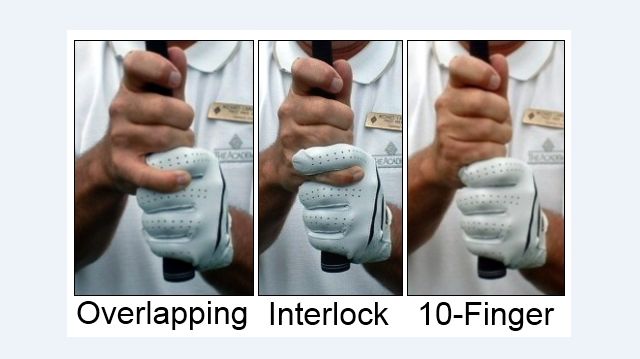Rory McIlroy and Shane Lowry shot an 11-under 61 in four-ball play Thursday for a share of the first-round lead at TPC of Louisiana.
The 3 Grips

The grip is one of the simplest things to learn in golf but one of the most important aspects of playing your best. It takes zero athletic ability to grip the club properly and it is crucial in manipulating the club face efficiently throughout the golf swing. Having ball flight issues? Look to your grip. The position of your clubface at the top of your swing and at impact can all be directly related to how you hold the club in your hands.
There are 3 ways you can grip the club and each have their pros and cons, two of them more popular than the one. No matter which one you choose it is imperative that you are gripping the club correctly. First thing we look for is that the grip is in the base of your fingers and not in your palms. This will allow you to release the club correctly. Whichever you choose, you want to make sure your bottom index finger is wrapped around the grip, like a trigger.
You can read a golf book that dates as far back as the 50’s by Ben Hogan or Harvey Penick and they’ll talk about the “V” your thumb and index finger make on each hand, and how these “V’s” should be pointing at your right shoulder (if you’re a right-handed player) at address. This is text book and you should be able to see 1-2 knuckles on your glove hand (left). See more than 2 knuckles than your grip is too strong. Don’t see any knuckles? Your grip is too weak. A weak grip usually leads to an open face and produces a high right miss with a lot of spin. A strong grip will make it easier to hit a draw.

Ten Finger or Baseball Grip This is the least common of the 3 grips with probably less than 5% of the golfing population utilizing it. I teach it to junior golfers and some ladies who may lack the strength to manipulate the club correctly throughout the swing. The issue here is that the hands are separated on the handle and can often work against each other and allow the player to get too “handsy.” The bottom hand can create a “flip” where the left wrist cups at impact. This will lead to adding too much loft and hitting it left. The baseball grip can also cause the player to squeeze to hard and create tension in their hands, wrists, and forearms.
Tour players who use a baseball grip: Moe Norman, Tommy Gainey, Scott Piercy, Bob Estes
Interlock This is the 2nd most popular of the three with about 30% of players utilizing the interlock grip. This is when the bottom pinky and the top index finger actually intersect and become one solid unit. This grip is usually used by power hitters or players who are known for being long off the tee. The interlock also tends to relax the hands and wrists and decrease pressure or tension. If done properly, the bottom thumb will point directly down the shaft. The interlock is popular among players with larger hands, but isn’t set in stone as Tiger doesn’t have larger than normal hands.
Tour players who use an interlock grip: Jack Nicklaus, Tiger Woods, Rory McIlroy, Tom Kite, Michelle Wie
Overlap The overlap is the most popular grip with about 70% of the golfing population and 90% of tour players using it. This is perhaps because it is the most comfortable. Your top index finger wraps around the shaft while creating a space for your bottom pinky to fit between it and your bottom middle finger. This grip creates precision and accuracy and helps deliver the clubface with the most efficiency. The overlap is ideal for players who have smaller or average sized hands.
Tour players who use an overlap grip: Ben Hogan, Arnold Palmer, Phil Mickelson

How you grip the club is maybe the most important fundamental in golf. I hate to even call it a fundamental because there’s a few ways to do it. But anyone can learn the proper grip. You just have to figure out which one works best for you and it better be comfortable. It’s the only relationship feel-wise you have with the golf club in the swing. If I have a student who has played golf with the same grip for years and then change it, they’ll want to quit the game. You’ve gripped the club the same way for 20 years than somebody changing it can be maddening. But the more repetitions the better and confident you’ll feel and soon you won’t even be thinking about it. I still check my grip position and pressure in my pre shot routine, on every shot, every time.
It is uncommon for a professional player to switch grips entirely in the middle of their career, but it is not uncommon for a player to tweak their grip a touch because of a ball flight error they’re seeing. Maybe they need to get the grip less in the hands and more in their fingers, or maybe they need to see 2 knuckles at address instead of one. Perhaps they didn’t like the position their thumb was in. Again, comfort is important but may not always mean its right. Sometimes you have to take yourself out of your comfort zone to implement a necessary change to get better. If you feel comfortable right away, you haven’t changed anything at all and will still see the same results. And that is a sign of insanity. And golf is absolutely insane.
Enjoy the game and each other,
Seth Zipay – Head Golf Professional
